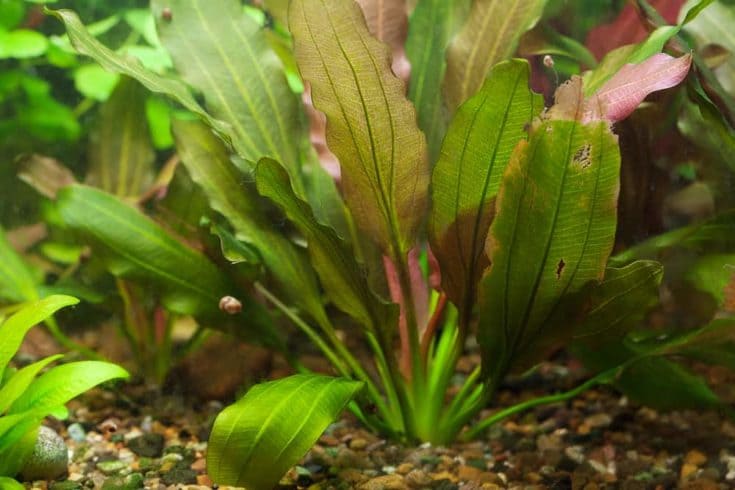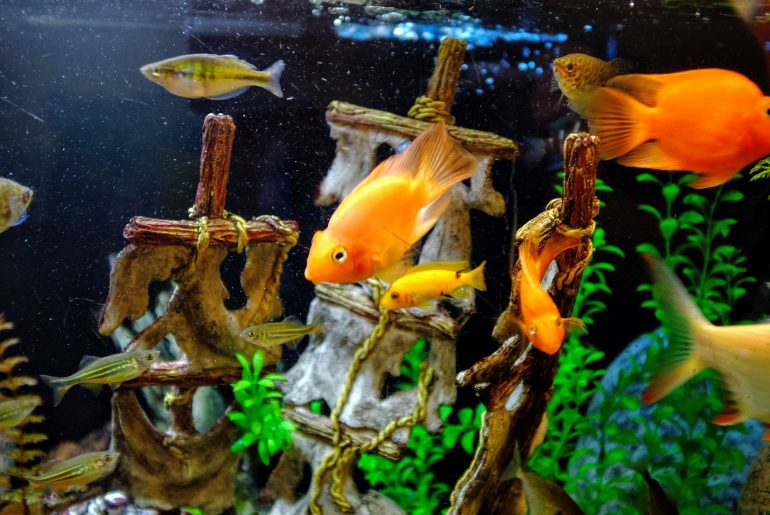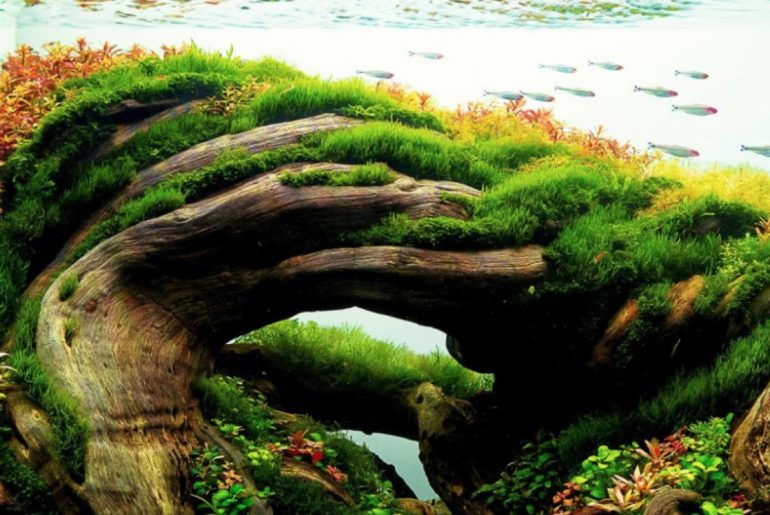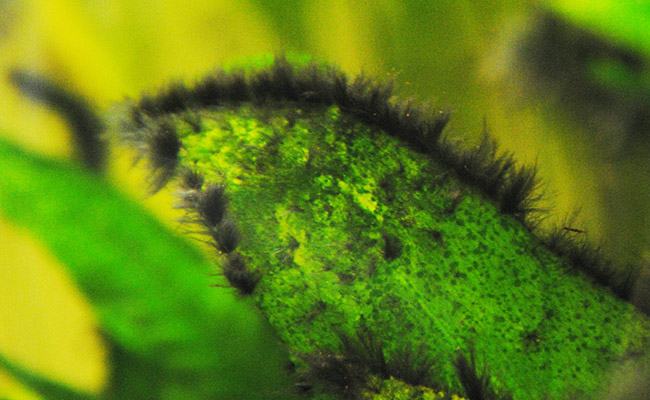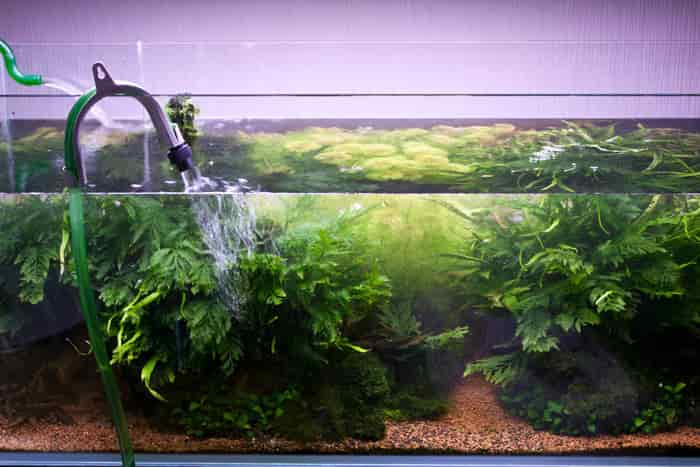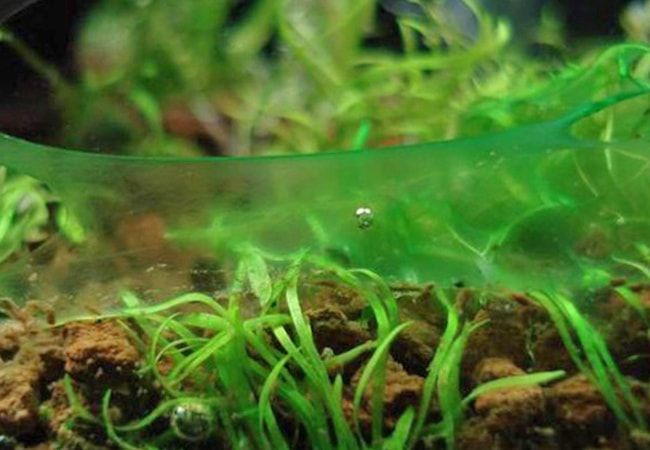Red algae are particularly unwelcome guests in the aquarium. They appear here as brush algae and beard algae – and are among the more stubborn representatives of algae. Here you can find out how to combat red algae, identify them correctly and prevent a dreaded red algae plague.
What are red algae?
If you are dealing with red algae for the first time, you may be surprised: the types of red algae that occur in the aquarium do not really look red. Rather, brush algae and beard algae appear in a spectrum of dark colors from gray to black. Reddish, brownish, or greenish coloring can also occur. They only reveal their red color when they come into contact with high-proof alcohol. To reliably distinguish red algae from green algae, a test with alcohol is often very helpful. Because a green alga can, depending on its growth form, look very similar to a red alga.
Which red algae do I have in the aquarium: brush algae or beard algae?
If you were able to successfully identify the algae in your aquarium as red algae, they belong either to the brush algae or to the beard algae. As a rule, these types of algae can be easily distinguished from one another visually: their name describes the typical growth form very well. However, because brush algae and beard algae look very similar in principle and their color and preferred occurrence are the same, confusion can occur. When determining the red algae, pay attention to the following characteristics.
Combat red algae: be thorough
Red algae have a particularly bad reputation among the algae species. It is often difficult to get rid of them because they grow very firmly into the ground. If you remove them mechanically, there is always a residue. This allows the red algae to spread again quickly. It also spreads quickly by being introduced from other aquariums. Therefore, if red algae appear in your aquarium, you should not waste any time and take appropriate measures immediately.
Remove red algae from aquarium plants
Red algae are often so attached to aquarium plants that they cannot be detached from the leaves without damaging them. It is therefore best to completely remove heavily algae-covered leaves. If in doubt, you should get rid of heavily infested aquarium plants in order to get rid of an advanced red algae plague. If you have to remove a lot of plants, provide replacements: Temporarily plant a few fast-growing aquarium plants (such as waterweed or chickweed). These are robust, cheap to have as aquatic plants in the bundle, and can be exchanged for more demanding aquarium plants after the algae plague has been successfully combated.
Remove red algae: hardscape and substrate
If the algae have attacked stones or roots that you can remove from the aquarium, you are in luck. You can boil them thoroughly and then clean them with a brush. This is how they remove red algae that are clinging to it. If, for example, firmly bonded stone structures or even the substrate are infested, the removal is conceivably more complex. It can even make sense to do a complete reinstallation. You can find out more about the occurrence and combat of brush algae and beard algae in the article on the respective type of algae.
Algae eaters against red algae
Algae eaters such as fish, snails, or shrimp can help to combat algae. They are even more important in preventing red algae infestation. Unfortunately, this is not necessarily the most popular type of algae on the menu of most animals. Only select algae eaters for the aquarium are known to eat red algae. It is best to get rid of the thought that you are putting a troop of algae eaters in the aquarium and they will simply eat your algae. Rarely is it that simple?
Red Algae: Prevention is the best way
Fighting red algae is very time-consuming. Therefore, the golden rule applies all the more to this type of algae: it is better to prevent algae than to fight them. Even after the algae have been successfully removed, you should check all parameters in the aquarium to avoid re-infestation.
With red algae, make sure that you never move plants or objects from one infested tank to another. Remember that the algae also adhere to the aquarium technology. Likewise, the landing net can be the culprit when it comes to red algae transmission. It is either important to pay attention to the most thorough hygiene (by means of disinfection) or to strictly separate the objects for different aquariums.
We hope that we have been able to help you with our information and tips on combating red algae in the aquarium. What are your experiences with this type of algae? We are looking forward to your comments!





